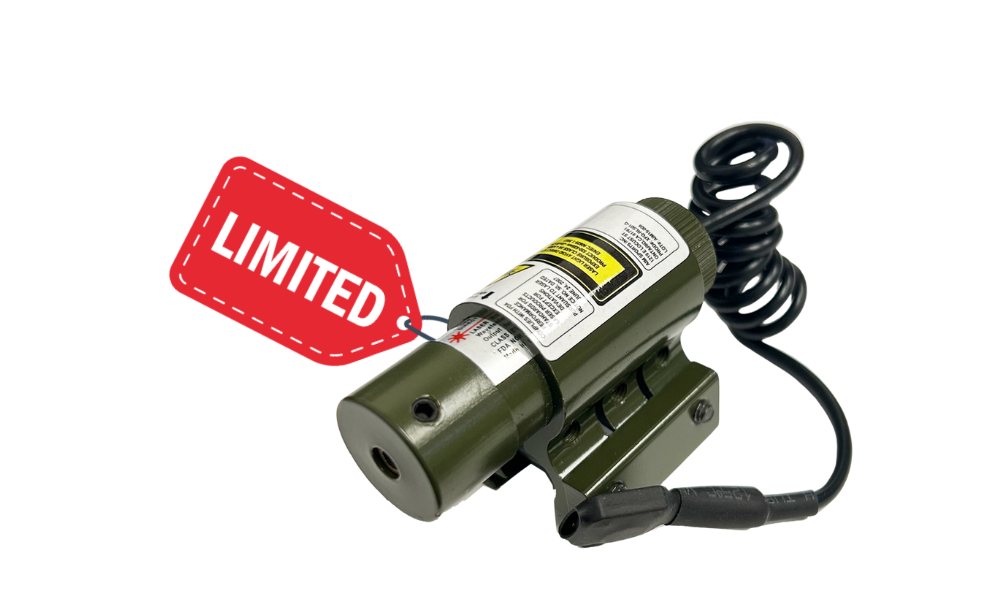Feb 25th 2025
Everything You Need to Know About Gas Systems in Firearms
If you’re an avid firearm enthusiast or someone building your own AR-style rifle, understanding the gas system is crucial. The gas system plays a key role in cycling the firearm, ensuring reliable function and performance. Whether you’re looking to fine-tune an existing rifle or decide which gas system is best for your next build, this blog will break down the different types of gas systems and help you choose the right one for your needs.
What is a Gas System?
The gas system in a semi-automatic or automatic rifle is responsible for utilizing gas pressure from the fired round to cycle the action of the firearm. When a round is fired, gases from the burning powder are directed into a gas block, which channels the gas into the gas tube, ultimately cycling the bolt carrier group (BCG) to eject the spent casing and load a fresh round into the chamber.
In simple terms, the gas system is what makes your firearm semi-automatic or automatic. Without a properly functioning gas system, your firearm wouldn’t cycle, leaving you with a single shot rifle.
How Does a Gas System Work?
When a round is fired, the expanding gases from the cartridge are funneled through a gas port in the barrel. The gas travels through the gas block and is directed into the gas tube, which sends the gas back into the bolt carrier group. This pressure drives the bolt carrier group rearward, ejecting the spent case and chambering the next round.
In short, the gas system is a form of self-loading mechanism that ensures your firearm continues to function as long as there is ammunition in the magazine. The gas system is responsible for making sure the firearm reliably cycles through shots.
Types of Gas Systems
Gas systems come in different lengths and designs, and the type of system you choose can significantly affect your rifle’s performance. The most common types of gas systems include:
1. Direct Impingement (DI) Gas System
Direct Impingement is the most traditional and common gas system found in AR-15-style rifles. In this system, the gas travels directly from the gas tube into the bolt carrier group, where it is used to cycle the action. DI systems are lightweight and have fewer moving parts, but they tend to direct more heat and carbon into the action, which can require more maintenance to keep the rifle clean and running smoothly.
- Pros: Lightweight, simple design, less expensive
- Cons: Requires more frequent cleaning, can be dirtier compared to other systems
2. Piston Gas System
The piston gas system operates by using a piston to push the bolt carrier group rearward, rather than using direct gas impingement. This system is typically cleaner, as it keeps the gas and carbon outside of the bolt carrier group. Piston-driven rifles often run cooler and cleaner than DI rifles, but they are heavier and more expensive due to their additional components.
- Pros: Cleaner operation, less heat directed into the action, better for harsh conditions
- Cons: Heavier, more complex, higher cost
3. Adjustable Gas System
An adjustable gas system allows you to fine-tune the amount of gas being used to cycle the bolt carrier group. This can be especially useful for shooters who want to adjust the rifle’s cycling to match different ammunition types or shooting conditions. Adjustable gas blocks allow you to control recoil and minimize wear and tear on the firearm by regulating how much gas is being used.
- Pros: Customizable to different ammo types, reduced recoil, less wear on the firearm
- Cons: Can add complexity and weight, higher cost
4. Short-Stroke vs. Long-Stroke Piston
-
Short-Stroke Piston: In a short-stroke system, the piston only moves a short distance before it stops, transferring its energy to the bolt carrier group. This system is known for its clean operation and reduced recoil.
-
Long-Stroke Piston: The long-stroke piston drives the bolt carrier group over a longer distance, resulting in more energy transferred to the BCG. This design is robust but can add more weight and recoil to the rifle.
Choosing the Right Gas System
Selecting the best gas system for your rifle depends on several factors, including how you plan to use your firearm and the type of performance you want to achieve. Here are a few things to consider:
-
Purpose: If you're building a rifle for tactical use or rugged conditions, a piston system might be the better choice for its cleaner operation. For recreational or competition shooting, a direct impingement system might be more than sufficient.
-
Maintenance: Direct impingement systems are lighter and simpler but require more regular cleaning. Piston systems are more self-cleaning, so they require less maintenance during extended use.
-
Recoil and Performance: If reducing recoil or fine-tuning cycling is important to you, an adjustable gas block can offer customization that improves your shooting experience, especially when using different ammunition.
-
Cost: Piston systems and adjustable gas systems tend to be more expensive than DI systems, so if you're on a budget, a DI system might be the best option.
Conclusion
Understanding the ins and outs of your firearm’s gas system is essential to optimizing its performance. Whether you go with a Direct Impingement system for simplicity and light weight, or a piston system for a cleaner, more durable setup, the right gas system will depend on your shooting style, maintenance preferences, and budget. ShootersGate.com offers a variety of gas system components and accessories to help you build the perfect rifle tailored to your needs.
Explore our selection of gas blocks, gas tubes, and other related parts to get the most out of your firearm!

